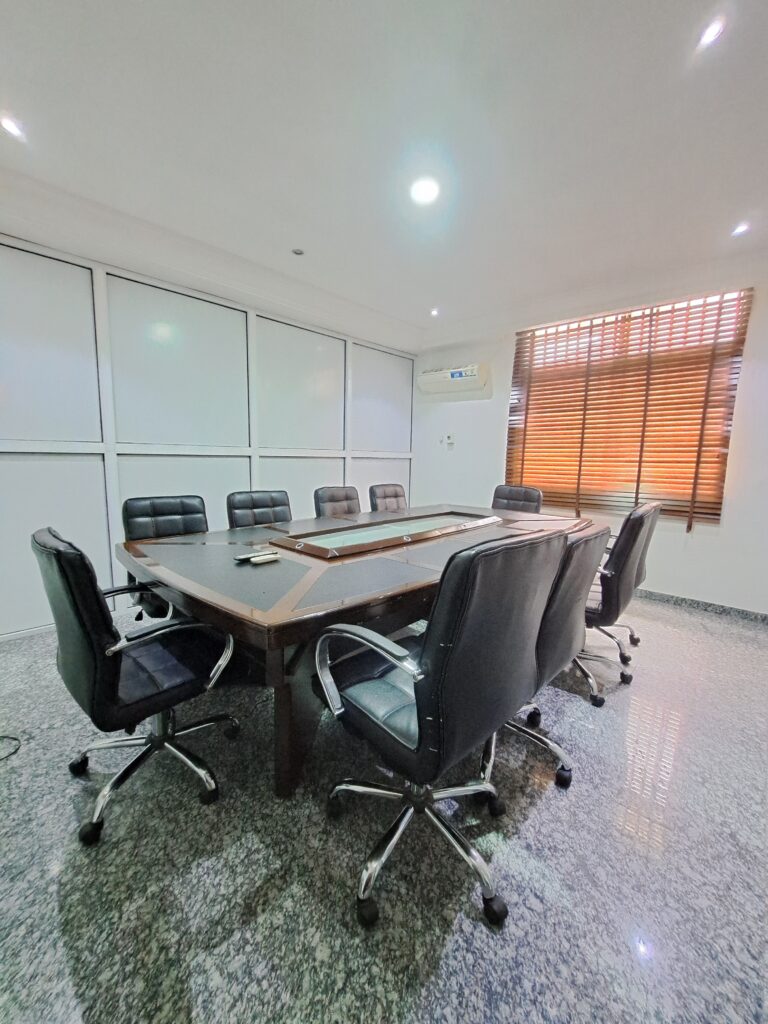In an era marked by the transformative nature of work, co-working spaces have emerged as desirable habitats for professionals who seek an alternative to traditional office structures. The appeal of these shared workspaces lies in their promise of flexibility, collaboration, and a dynamic atmosphere that transcends the monotony of conventional office life.
However, amid the benefits of networking, shared resources, and a vibrant community, the danger of burnout – as is common with conventional office work – lies in the shadows. This article will consider the intricacies of this issue, specifying the causes, how to prevent work burnout, as well as how to promote a burnout-resilient culture.
What Is Work Burnout?
Work burnout is a state of chronic physical and emotional exhaustion, often accompanied by feelings of cynicism and detachment from one’s job responsibilities. It is a form of prolonged stress that results when the demands of a job consistently exceed an individual’s physical and psychological resources. Burnout is a persistent condition that can cause severe mental health issues. Signs of work burnout include –
● Exhaustion:
- Physical fatigue: Feeling tired and drained, both mentally and physically.
- Emotional fatigue: Experiencing a lack of energy and emotional resilience.
● Detachment
- Developing a negative attitude towards work, colleagues, and the overall professional environment.
- Feeling emotionally disconnected from the job, coworkers, and the organization.
● Reduced efficiency
- A decline in one’s sense of accomplishment and competence at work.
- Decreased efficiency and productivity, often accompanied by a sense of ineffectiveness.
9 Causes of Work Burnout in Co-working Spaces
Work burnout arises when an individual faces prolonged and intense stress at work, which can be as a result of various factors such as the following –
1. Excessive Workload:
Working long hours without adequate breaks can lead to physical and mental exhaustion. When the volume or complexity of work tasks becomes overwhelming, individuals may struggle to keep up, contributing to burnout.
2. Lack of Control:
Feeling a lack of control or influence over work-related decisions can lead to a sense of powerlessness and frustration. Also, rigid structures and processes that don’t allow for autonomy or flexibility can contribute to burnout.
3. Unclear Job Expectations:
Unclear job descriptions, vague expectations, or frequently changing responsibilities can create confusion and stress. When individuals are unsure of how their work is evaluated, it can lead to anxiety and a sense of inadequacy.
4. Lack of Recognition and Reward:
A lack of appreciation for one’s efforts and achievements can lead to feelings of undervaluation. Moreso, a stagnation in career growth or a perceived lack of opportunities for advancement can contribute to burnout.
5. Poor Work Relationships:
Frequent conflicts with coworkers or superiors can create a hostile work environment. Feeling socially isolated or unsupported by colleagues can contribute to burnout.
6. Work-Life Imbalance:
Constant connectivity through technology can blur the boundaries between work and personal life, leading to chronic stress. Insufficient time for relaxation and personal activities can also contribute to burnout.
7. Inadequate Resources:
Insufficient resources, be it technology, training, or support from colleagues, can make it difficult to meet job demands. A dysfunctional organizational structure can impede communication and collaboration, adding to stress.
8. Mismatch of Values and Job Role:
When personal values do not align with the organization’s mission or values, it can create a sense of dissonance and dissatisfaction. Performing tasks that do not align with one’s skills, interests, or passions can contribute to burnout.
9. Job Insecurity:
Economic uncertainties or the perception of job instability can create chronic stress and anxiety.
How Customer Burnout Affects Coworking Businesses
Burnout is detrimental to the very essence of what co-working spaces aim to achieve. Here’s how:
- When customers experience burnout, they may disengage from communal activities, networking events, and collaborative opportunities. This disconnection not only impacts the individual but also disrupts the vibrant atmosphere that attracts professionals to co-working spaces in the first place.
- Individuals facing exhaustion are likely to miss deadlines, make mistakes, and struggle to focus on tasks. In a co-working environment where collaboration and productivity are key selling points, customer burnout can contribute to an overall decline in the collective efficiency of the workspace.
- Word of mouth is a powerful force in any business, and co-working spaces are no exception. If customers experience burnout and share their negative experiences with peers, it can tarnish the reputation of the co-working space. Prospective customers might be deterred, fearing a stressful environment rather than an inspiring one.
- Co-working spaces often serve as hubs for networking and business opportunities. When customers face burnout, they may withdraw from these opportunities, missing chances to collaborate, network, or even start new ventures. This not only affects the burned-out individual but also hampers the potential growth and success stories that could have originated from within the co-working community.
The above points are why professional Coworking Spaces such as Savvy Instant Offices aim to offer resources and an environment that help minimize burnout.
How to Prevent Work Burnout in Co-working Spaces
Applying the following strategies can create a healthier work environment and prevent the chances of burnout occurring –
1. Establish Boundaries
Setting clear boundaries is crucial for maintaining a healthy work-life balance in a co-working setting. This includes defining work hours, designating break times, and establishing personal space. Clear communication with colleagues is essential to ensure everyone respects these boundaries, promoting a more harmonious co-working experience.
2. Be Flexible
While boundaries are important, co-working spaces thrive on flexibility. Embracing the adaptability of these environments can help prevent burnout. Flexibility in work hours, workspace choices, and project collaborations allows individuals to tailor their work experience to their unique needs, reducing the pressure to conform to a rigid schedule.
3. Prioritize Self-Care
In the fast-paced world of co-working, self-care can easily take a back seat. However, prioritizing mental and physical well-being is paramount for preventing burnout. Encouraging short breaks, incorporating mindfulness practices, and promoting a healthy lifestyle are essential components of a comprehensive self-care strategy.
4. Diversifying Workspaces
Co-working spaces often provide a variety of work settings, from open desks to private offices and communal areas. Diversifying the workspace can prevent monotony and increase productivity. Professionals can choose the environment that best suits their tasks, reducing the risk of burnout associated with a repetitive or uncomfortable workspace.
Already Burnt out? 4 Tips for Handling Work Burnout
Despite preventative efforts, burnout can still occur. How can you handle burnout in such cases? By following these steps:
1. Identify Burnout Indicators
Understanding the early signs of burnout is crucial for timely intervention. Constant fatigue, decreased productivity, increased irritability, and a sense of detachment are common indicators. Co-workers and supervisors should be alert to these signs and offer support when needed.
2. Seek Support
In a co-working environment, a sense of community is often built into the fabric of the space. Leveraging this community for support is important when dealing with burnout. Encouraging open communication and creating a culture that destigmatizes seeking help fosters a supportive environment where individuals feel comfortable addressing their struggles.
3. Taking Meaningful Breaks
Breaks are not just about stepping away from the desk; they should be meaningful and rejuvenating. Co-working spaces often provide communal areas, outdoor spaces, or wellness rooms. Utilizing these areas for short breaks can significantly contribute to mental well-being, providing a mental reset and reducing stress levels.
4. Establish Remote Work Days
Many co-working spaces offer the flexibility to work remotely. Taking advantage of this option on occasion can be a powerful strategy for preventing and recovering from burnout. Remote work days allow individuals to create a more controlled and personalized work environment, promoting a healthy balance between collaboration and focused solitude.
Promoting a Burnout-Resilient Co-Working Culture
Beyond individual strategies, creating a burnout-resilient culture within a co-working space is a shared responsibility.
● Educational Workshops and Resources
Co-working operators can play a crucial role in preventing burnout by offering educational workshops and resources. Topics such as stress management, time optimization, and mental health awareness can empower individuals with the tools they need to navigate the challenges of co-working.
● Building Support Networks
Facilitating the formation of support networks within the co-working community can be a powerful preventive measure. Regular networking events, mentorship programs, and collaborative projects foster a sense of belonging and support, reducing feelings of isolation that can contribute to burnout.
● Employee Assistance Programs (EAPs)
Co-working operators can consider implementing Employee Assistance Programs (EAPs) to provide confidential support services for individuals facing personal or professional challenges. These programs can include counseling services, mental health resources, and workshops on stress management, creating a safety net for members facing burnout.
Wrapping Up

Co-working spaces, while providing a dynamic alternative to traditional offices and changing our approach to work, pose a risk of work burnout if not managed properly. To create a thriving environment, it’s crucial to understand co-working dynamics, implement preventive strategies, address burnout, and cultivate a culture resilient to exhaustion. As the co-working landscape evolves, maintaining mental health and work-life balance is essential for sustained success.












